100th Anniversary Great Nave Tour at the Cathedral of St. John the Divine
Celebrate the 1925 construction of the stunning nave inside the world's largest Gothic cathedral!

Founded in 1898 and headquartered in three granite and limestone buildings on the historic Audubon Terrace sits the beautiful American Academy of Arts and Letters. Not generally open to the public, the complex was the creation and inspiration of Archer M. Huntington, the heir to the Southern Pacific Railroad. He donated this building, along with an endowment, to the Academy. The administrative building along West 155th Street and the Audubon Terrace were designed by McKim, Mead & White architect William Mitchell Kendall, who was an Academy member.
Yesterday, we were lucky to get a tour of the American Academy of Arts and Letters.

The Academy is made up of a maximum of 250 members in art areas that include writers, artists, composers, architects and filmmakers. Members are elected for life and pay no dues. In 2005, the American Numismatic Society–who occupied the adjacent building–moved downtown, opening the way for the Academy to purchase their property. A twelve foot corridor was built between the two buildings creating a Glass Link to connect the new galleries to the administration building.
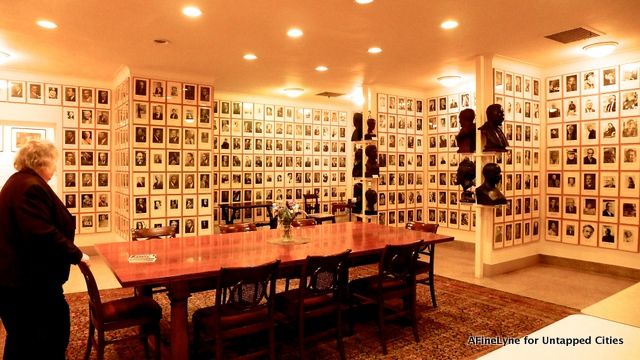
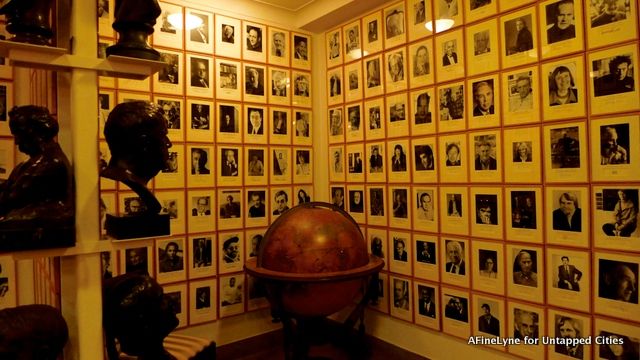
The Academy was originally founded in 1898 with 150 members as The National Institute of Arts and Letters, with meetings held on West 43rd Street. Styling themselves after The Academie Francaise, the members created The American Academy of Arts and Letters in 1904. After the merger of the two institutions, they moved into their current complex in 1923 and changed name to the American Academy of Arts and Letters with a membership of 250. They admitted their first female member in 1908 with the invitation going to Julia Ward Howe, the poet.
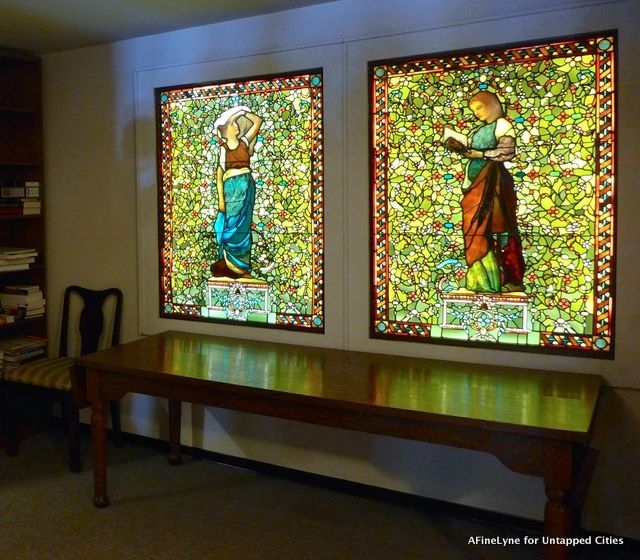
When you enter through the West 155th Street door, your eyes are drawn to the back wall where two John La Farge stained glass windows are placed. La Farge became a member of the Academy in 1904.
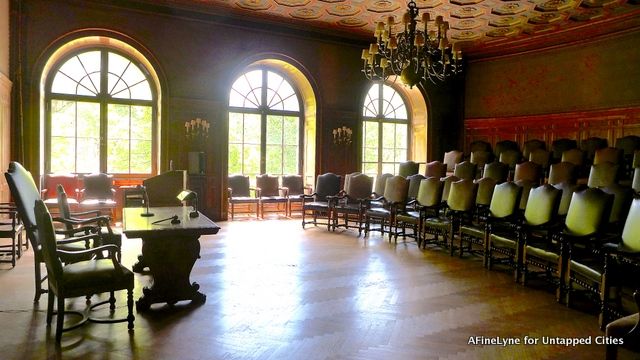
The fifty chairs in the Members’ Room are the original chairs procured from the Academie Francaise and still have the name plaques on the back of each chair, when chairs were assigned to specific members. Behind the table are hand carved chairs original to Huntington’s house.

They have a library of over 23,000 volumes – manuscripts, books and scores. Researchers and scholars often come to work in their archives. Each year the Academy honors over 50 writers, architects, artists and composers with cash awards ranging from $5,000 to $75,000. In addition, they purchase paintings by American artists for distribution to museums.
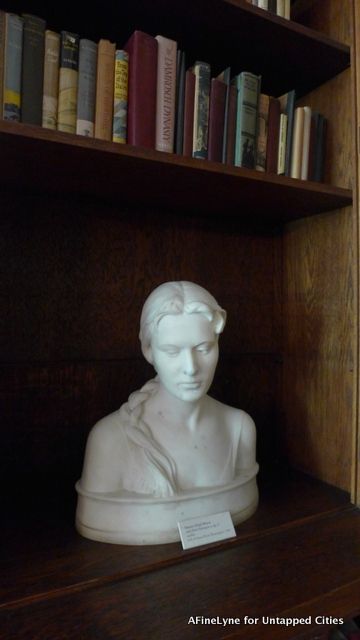
Archer Huntington’s second wife was Anna Hyatt, the American sculptor. It is said that when he proposed, she declined and Archer took to his bed until she changed her mind.
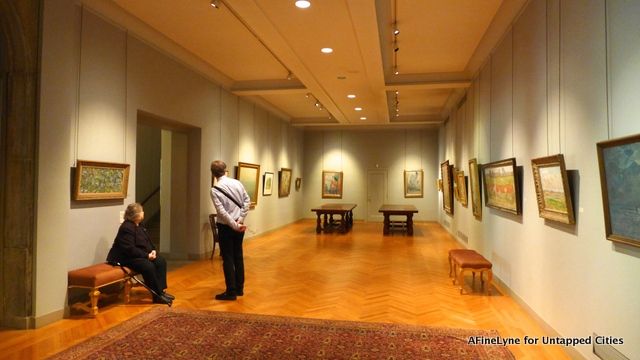
Childe Hassam, also an Academy member, bequeathed the complete contents of his studio–nearly 450 paintings–to the Academy. His artwork is periodically sold at auction and the proceeds are used to purchase art for museums.
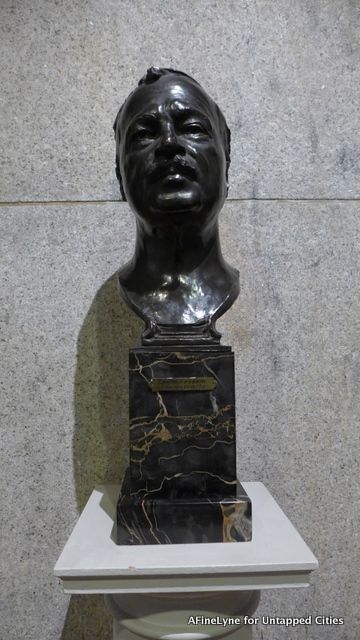
A bust of Childe Hassam sits outside a gallery containing his artwork.
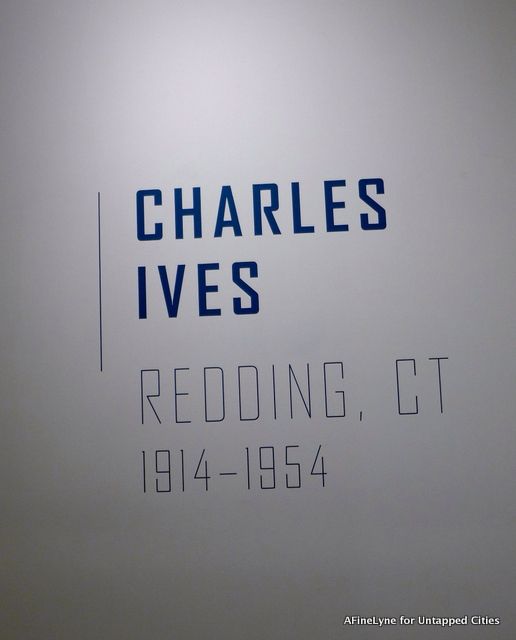
The West Redding, Connecticut studio of composer Charles Ives was recently donated and moved to the Academy. It was meticulously recreated to look exactly as it did when Ives’s died in 1954 and will be part of a permanent exhibit. This is the studio where Ives worked for the last forty years of his life.
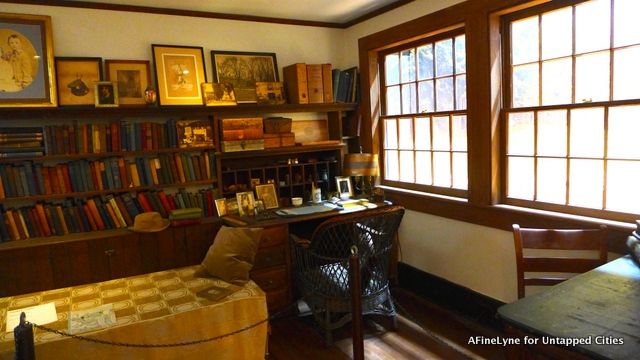
The room is displayed in a way allowing you to step into the small studio and take in the hundreds of items that were an everyday part of Ives life. They also have a window at the end of the room, allowing you a long view from behind his piano. More photographs of the studio are available here.
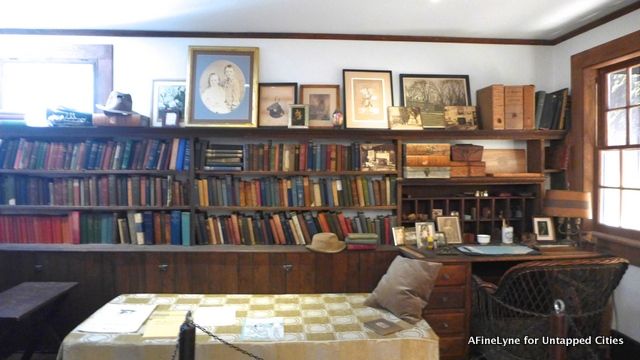
Along the hallway leading to this room is a display of hundreds of scores and other memorabilia.
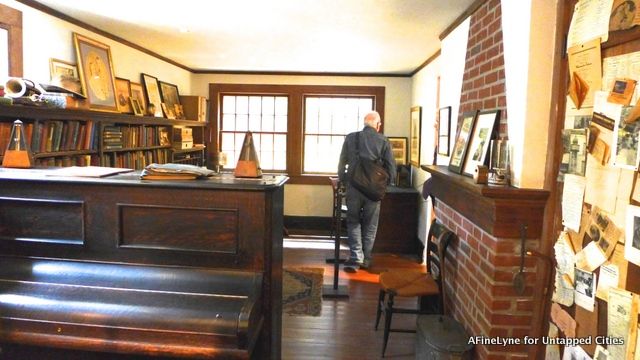

The bronze entrance doors to the administration building on West 155th Street were designed by Academy member Adolph Alexander Weinman and are dedicated to the memory of Mary E. Wilkins Freeman, and to the women writers of the United States.
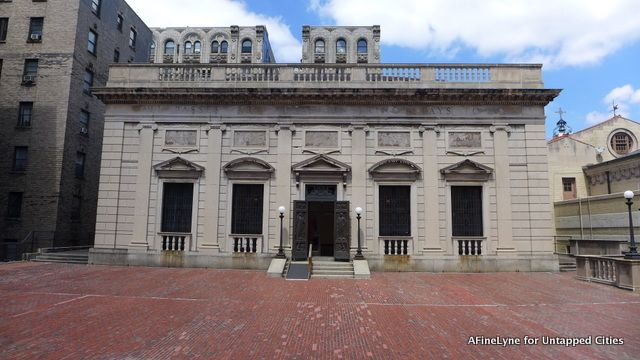
While the Academy is not generally open to the public, the upper galleries are open on specific published dates, and as it happens they will be open Thursday through Sunday from 1pm to 4pm until June 15th along with the Charles Ives Studio exhibit, all free of charge.
Audubon Terrace is located on Broadway between 155th and 156th Streets in Washington Heights, one block from the #1 subway station. If you go, stop in for a visit at the Hispanic Society of America right next door on the Audubon Terrace. You can pick up the M4 or M5 bus across the street in front of the historic Trinity Church Cemetery.
You can follow AFineLyne on Twitter or on Facebook at Harlem Sketches or Greenwich Village Sketches. Don’t forget to head over to the Untapped Shop.
Subscribe to our newsletter